Instruction
Learning from Ben Hogan’s Pivot Compression (Part 2)
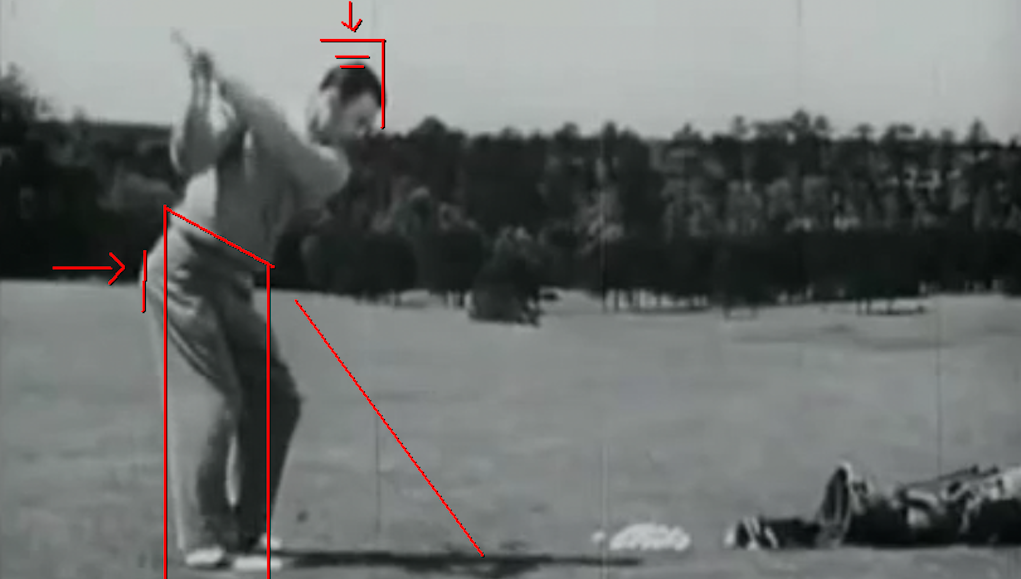
Note: Part 1 of this story, Learning from Ben Hogan’s Pivot Compression, can be read here.
As a teacher at Lakewood Country Club in Rockville, Maryland, I see many of my students (and almost everybody else) suffer from losing posture during both the backswing and the forward swing. They tend to lift up in the backswing, and their hips eventually thrust forward and upward toward the ball as they approach impact, causing their head to raise up and back, giving the general feeling of “coming up out of the shot.” How many times have you said to yourself or had a playing partner tell you that you “looked up” or “came out of it?”
I began to devise a set of instructions and drills to rectify this serious swing error by incorporating elements of Pivot Compression into my students’ swings. Over time, I have developed and documented a body of detailed information, much of it available on video on my website, waynedefrancesco.com, designed to help players achieve a more efficient, powerful and athletic golf swing.
In this story, I give you a short list of ideas that is a great place to start for anyone interested in adopting the Pivot Compression move into their swing.
1. Set up with your weight on the balls of your feet.
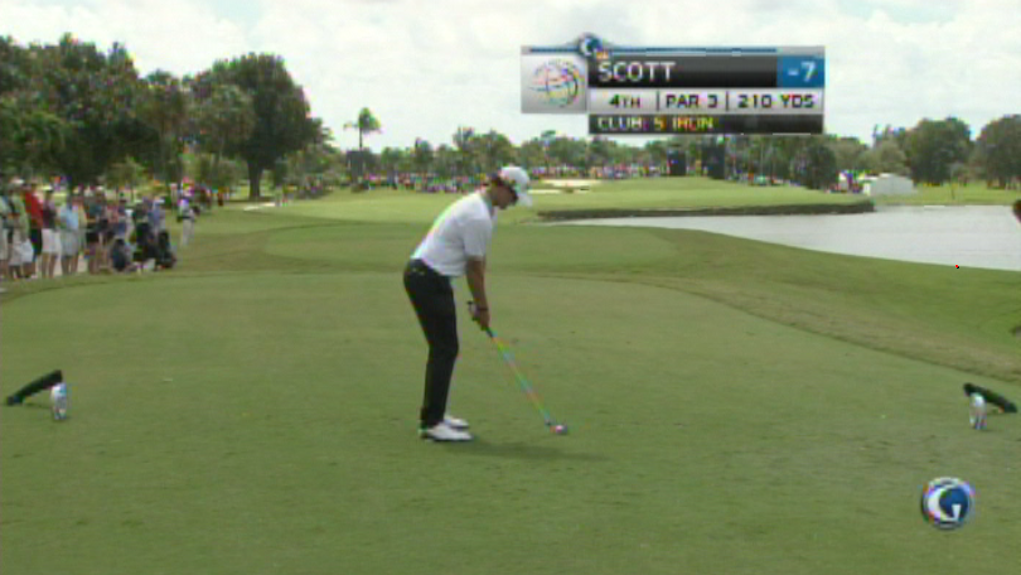
Your movement in your backswing will be to move pressure back toward your right heel with your head staying out over the ball. If you start with your weight on your heels at address, moving to a deeper position will feel out of balance.
2. Start the backswing with your upper trunk while encouraging the right hip to move backward almost immediately.
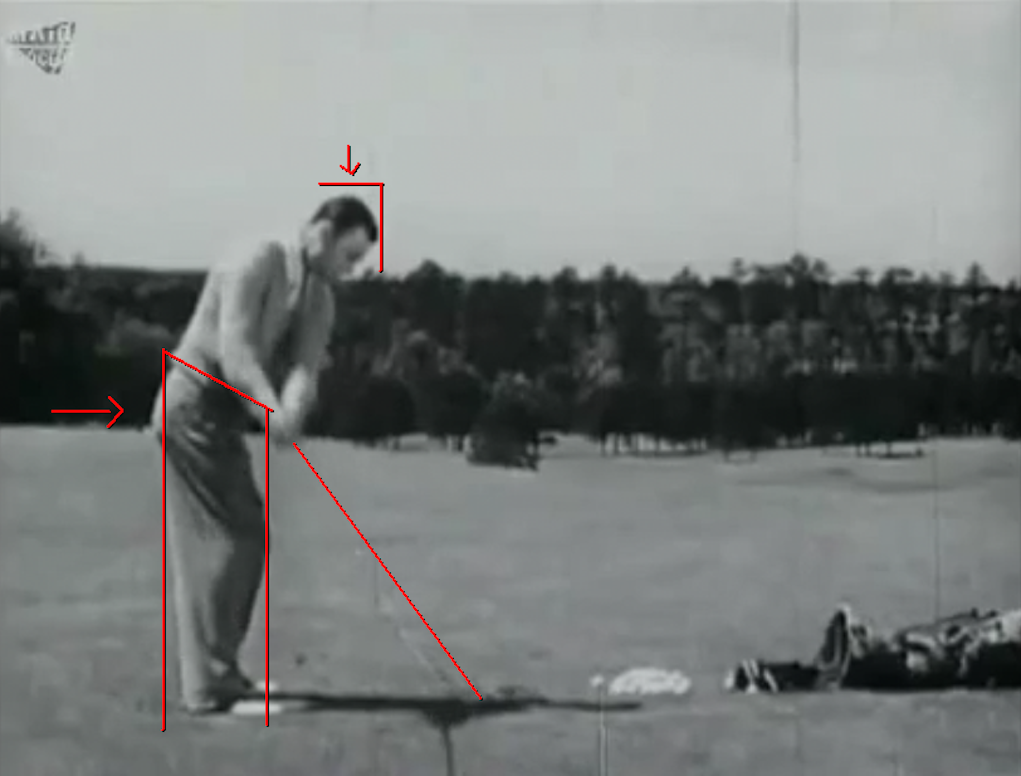
The right knee should stay flexed or even add a little flex, and the right foot should stay braced in so that the weight on it does not drift to the outside of the foot. This helps to keep the hips from swaying to the right. If the head stays out over the ball as it should, the shoulder turn will feel steeper as the hands and arms move slightly inward toward the body.
3. At the same time as your upper trunk starts your swing, begin to increase the pressure under your right foot and move that pressure toward your heel by pushing the right side of your pelvis back.
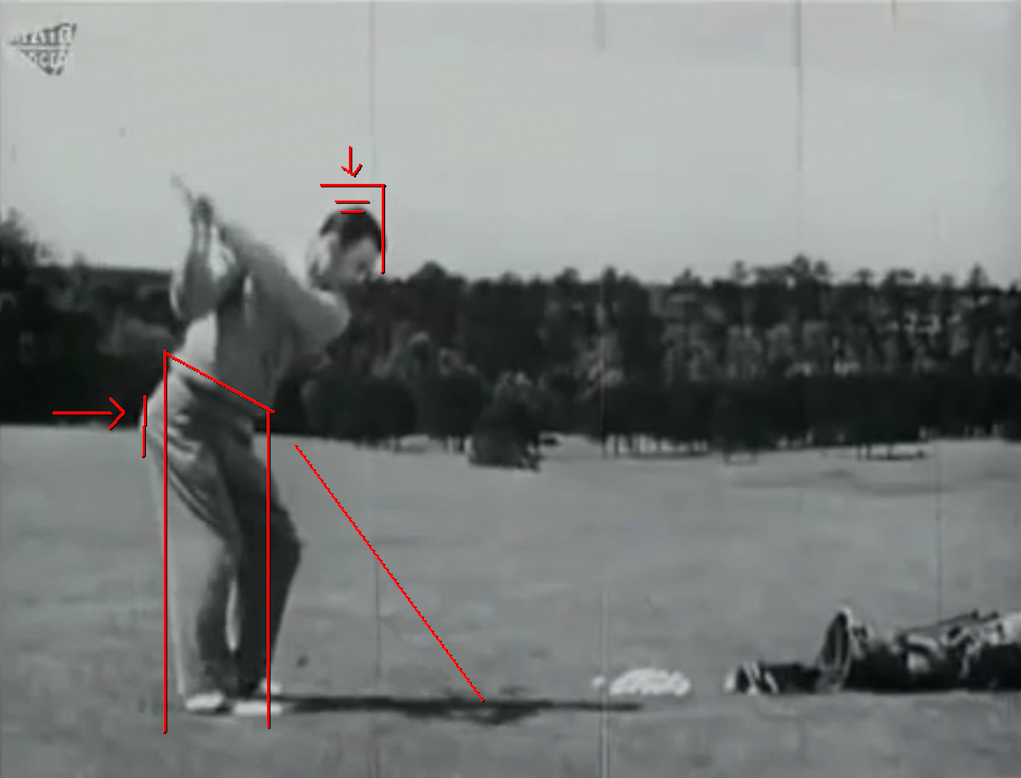
If the pelvis deepens on the right side, the left side of the pelvis will not move forward much at all, meaning that now your entire pelvis has moved to a deeper position, one that is critical to your ability to clear your left side in the forward swing. Your head will lower as you do this, but the lowering will be due to the increased depth of your midsection. Practice this backswing in a mirror. As you get used to it you can load it with a weighted club. Again, it is very important to not allow your head to back up away from the ball at this or any point of the swing.
4. Initiate the forward swing by using the muscles in the right side of the pelvis that rotate the hip to reverse the direction of the hip movement from clockwise to counter-clockwise.
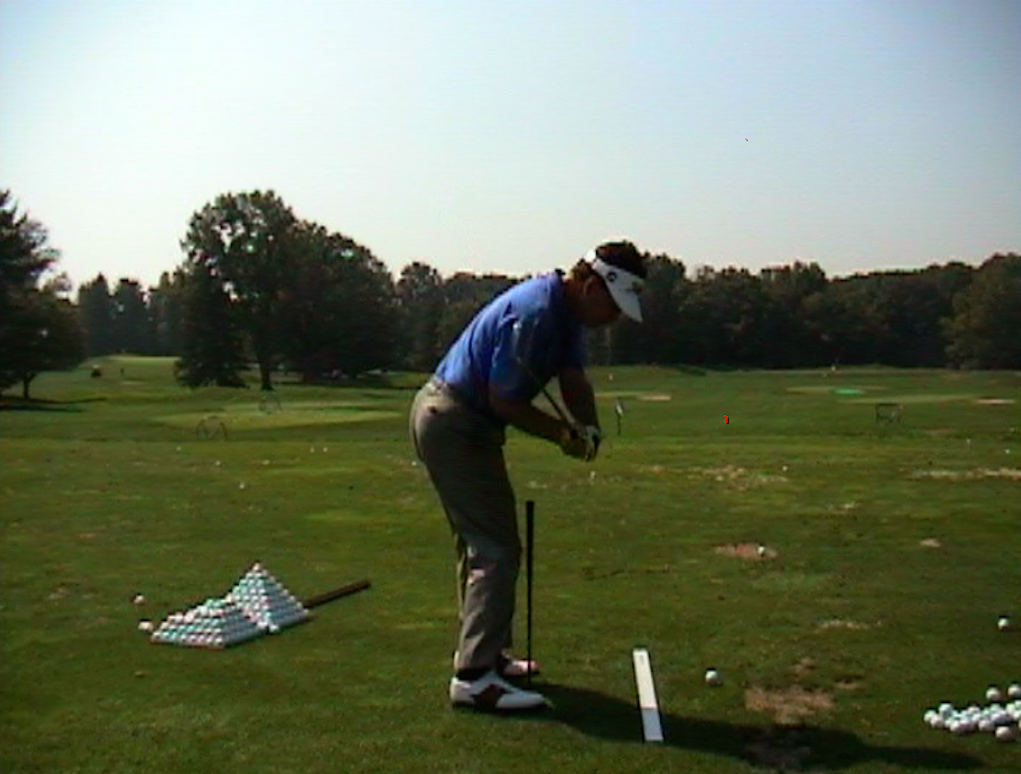
Because the right leg is now loaded and braced, this counter-clockwise rotation will drive the entire pelvis away from the right foot, giving the swing its necessary lateral left movement. This is done just before the backswing finishes, driving your hips in a diagonal direction approximately 45 degrees left of the target line.
The transition movement utilizes the pressure you feel under the inside of the right foot and will begin to rotate the hips immediately, but you must still activate and aggressively use the muscles on the left side of the pelvis as well as the muscles of the entire left leg (for a detailed analysis of the pelvic movement in transition please refer to Dr. Jeffrey Mann and his website perfectgolfswingreview.net).
Many people feel that the left knee initiates the forward swing, but that movement alone will not ensure pressure change from right to left, and I would suggest that you focus on the right side and the ground pressure under the right foot to start your downswing. Once the right side has rotated and driven to the left, your goal will be to clear the leg behind you as fast as you can. I like to have my students put a short shaft in the ground right between their feet and just in front of their knee line so that they will be able to tell if their lateral drive is deep enough. If the right leg knocks into the stick, then it is pushing too much toward the ball, which is the leading cause of “early extension” or loss of posture (standing up) during the downswing.
5. Make room for the right arm to drive in front of the right hip while trying to get the hands to pass by the body as close to the original address position as possible (the shaft-plane approach).
The club will hopefully still be cocked at 90 degrees to the right forearm as the hands reach the ball, which is the best way to guarantee forward shaft lean at impact. Impact drills are the best way to learn this feeling, so punch shots (low shots hit with a swing that reaches only left arm parallel in the backswing and shaft parallel to the ground in the follow through), split hand punch shots, and punch shots that start with the hands pre-cocked are great ways to practice.
6. Drive the hips to the finish.
The feeling should be to “squeeze” the glutes and inner thighs while approaching impact and to continue this feeling all the way past the ball, so that it feels like the belt buckle is being driven upward and to the left. Hogan, as usual, is the best example of this, but if you like more contemporary players look no further than Tiger Woods and Adam Scott.
Learn more about Ben Hogan’s Pivot Compression from Wayne DeFrancesco in Part 1 of the series.
- LIKE128
- LEGIT24
- WOW11
- LOL7
- IDHT2
- FLOP5
- OB8
- SHANK66
Instruction
The Wedge Guy: The easiest-to-learn golf basic

My golf learning began with this simple fact – if you don’t have a fundamentally sound hold on the golf club, it is practically impossible for your body to execute a fundamentally sound golf swing. I’m still a big believer that the golf swing is much easier to execute if you begin with the proper hold on the club.
As you might imagine, I come into contact with hundreds of golfers of all skill levels. And it is very rare to see a good player with a bad hold on the golf club. There are some exceptions, for sure, but they are very few and very far between, and they typically have beat so many balls with their poor grip that they’ve found a way to work around it.
The reality of biophysics is that the body moves only in certain ways – and the particulars of the way you hold the golf club can totally prevent a sound swing motion that allows the club to release properly through the impact zone. The wonderful thing is that anyone can learn how to put a fundamentally sound hold on the golf club, and you can practice it anywhere your hands are not otherwise engaged, like watching TV or just sitting and relaxing.
Whether you prefer an overlap, interlock or full-finger (not baseball!) grip on the club, the same fundamentals apply. Here are the major grip faults I see most often, in the order of the frequency:
Mis-aligned hands
By this I mean that the palms of the two hands are not parallel to each other. Too many golfers have a weak left hand and strong right, or vice versa. The easiest way to learn how to hold the club with your palms aligned properly is to grip a plain wooden ruler or yardstick. It forces the hands to align properly and shows you how that feels. If you grip and re-grip a yardstick several times, then grip a club, you’ll see that the learning curve is almost immediate.
The position of the grip in the upper/left hand
I also observe many golfers who have the butt of the grip too far into the heel pad of the upper hand (the left hand for right-handed players). It’s amazing how much easier it is to release the club through the ball if even 1/4-1/2″ of the butt is beyond the left heel pad. Try this yourself to see what I mean. Swing the club freely with just your left hand and notice the difference in its release from when you hold it at the end of the grip, versus gripping down even a half inch.
To help you really understand how this works, go to the range and hit shots with your five-iron gripped down a full inch to make the club the same length as your seven-iron. You will probably see an amazing shot shape difference, and likely not see as much distance loss as you would expect.
Too much lower (right) hand on the club
It seems like almost all golfers of 8-10 handicap or higher have the club too far into the palm of the lower hand, because that feels “good” if you are trying to control the path of the clubhead to the ball. But the golf swing is not an effort to hit at the ball – it is a swing of the club. The proper hold on the club has the grip underneath the pad at the base of the fingers. This will likely feel “weak” to you — like you cannot control the club like that. EXACTLY. You should not be trying to control the club with your lower/master hand.
Gripping too tightly
Nearly all golfers hold the club too tightly, which tenses up the forearms and prevents a proper release of the club through impact. In order for the club to move back and through properly, you must feel that the club is controlled by the last three fingers of the upper hand, and the middle two fingers of the lower hand. If you engage your thumbs and forefingers in “holding” the club, the result will almost always be a grip that is too tight. Try this for yourself. Hold the club in your upper hand only, and squeeze firmly with just the last three fingers, with the forefinger and thumb off the club entirely. You have good control, but your forearms are not tense. Then begin to squeeze down with your thumb and forefinger and observe the tensing of the entire forearm. This is the way we are made, so the key to preventing tenseness in the arms is to hold the club very lightly with the “pinchers” — the thumbs and forefingers.
So, those are what I believe are the four fundamentals of a good grip. Anyone can learn them in their home or office very quickly. There is no easier way to improve your ball striking consistency and add distance than giving more attention to the way you hold the golf club.
More from the Wedge Guy
- The Wedge Guy: Golf mastery begins with your wedge game
- The Wedge Guy: Why golf is 20 times harder than brain surgery
- The Wedge Guy: Musings on the golf ball rollback
- LIKE83
- LEGIT13
- WOW4
- LOL1
- IDHT0
- FLOP4
- OB1
- SHANK8
Instruction
Clement: Stop ripping off your swing with this drill!

Not the dreaded headcover under the armpit drill! As if your body is defective and can’t function by itself! Have you seen how incredible the human machine is with all the incredible feats of agility all kinds of athletes are accomplishing? You think your body is so defective (the good Lord is laughing his head off at you) that it needs a headcover tucked under the armpit so you can swing like T-Rex?
- LIKE0
- LEGIT1
- WOW2
- LOL0
- IDHT0
- FLOP0
- OB0
- SHANK2
Instruction
How a towel can fix your golf swing

This is a classic drill that has been used for decades. However, the world of marketed training aids has grown so much during that time that this simple practice has been virtually forgotten. Because why teach people how to play golf using everyday items when you can create and sell a product that reinforces the same thing? Nevertheless, I am here to give you helpful advice without running to the nearest Edwin Watts or adding something to your Amazon cart.
For the “scoring clubs,” having a solid connection between the arms and body during the swing, especially through impact, is paramount to creating long-lasting consistency. And keeping that connection throughout the swing helps rotate the shoulders more to generate more power to help you hit it farther. So, how does this drill work, and what will your game benefit from it? Well, let’s get into it.
Setup
You can use this for basic chip shots up to complete swings. I use this with every club in my bag, up to a 9 or 8-iron. It’s natural to create incrementally more separation between the arms and body as you progress up the set. So doing this with a high iron or a wood is not recommended.
While you set up to hit a ball, simply tuck the towel underneath both armpits. The length of the towel will determine how tight it will be across your chest but don’t make it so loose that it gets in the way of your vision. After both sides are tucked, make some focused swings, keeping both arms firmly connected to the body during the backswing and follow through. (Note: It’s normal to lose connection on your lead arm during your finishing pose.) When you’re ready, put a ball in the way of those swings and get to work.

Get a Better Shoulder Turn
Many of us struggle to have proper shoulder rotation in our golf swing, especially during long layoffs. Making a swing that is all arms and no shoulders is a surefire way to have less control with wedges and less distance with full swings. Notice how I can get in a similar-looking position in both 60° wedge photos. However, one is weak and uncontrollable, while the other is strong and connected. One allows me to use my larger muscles to create my swing, and one doesn’t. The follow-through is another critical point where having a good connection, as well as solid shoulder rotation, is a must. This drill is great for those who tend to have a “chicken wing” form in their lead arm, which happens when it becomes separated from the body through impact.
In full swings, getting your shoulders to rotate in your golf swing is a great way to reinforce proper weight distribution. If your swing is all arms, it’s much harder to get your weight to naturally shift to the inside part of your trail foot in the backswing. Sure, you could make the mistake of “sliding” to get weight on your back foot, but that doesn’t fix the issue. You must turn into your trial leg to generate power. Additionally, look at the difference in separation between my hands and my head in the 8-iron examples. The green picture has more separation and has my hands lower. This will help me lessen my angle of attack and make it easier to hit the inside part of the golf ball, rather than the over-the-top move that the other picture produces.


Stay Better Connected in the Backswing
When you don’t keep everything in your upper body working as one, getting to a good spot at the top of your swing is very hard to do. It would take impeccable timing along with great hand-eye coordination to hit quality shots with any sort of regularity if the arms are working separately from the body.
Notice in the red pictures of both my 60-degree wedge and 8-iron how high my hands are and the fact you can clearly see my shoulder through the gap in my arms. That has happened because the right arm, just above my elbow, has become totally disconnected from my body. That separation causes me to lift my hands as well as lose some of the extension in my left arm. This has been corrected in the green pictures by using this drill to reinforce that connection. It will also make you focus on keeping the lead arm close to your body as well. Because the moment either one loses that relationship, the towel falls.


Conclusion
I have been diligent this year in finding a few drills that target some of the issues that plague my golf game; either by simply forgetting fundamental things or by coming to terms with the faults that have bitten me my whole career. I have found that having a few drills to fall back on to reinforce certain feelings helps me find my game a little easier, and the “towel drill” is most definitely one of them.
- LIKE12
- LEGIT1
- WOW2
- LOL0
- IDHT0
- FLOP2
- OB0
- SHANK8
-

 19th Hole2 weeks ago
19th Hole2 weeks agoJohn Daly stuns fans into silence with brutal opening tee shot on PGA Tour Champions
-

 19th Hole4 days ago
19th Hole4 days agoThings got heated at the Houston Open between Tony Finau and Alejandro Tosti. Here’s why
-

 19th Hole18 hours ago
19th Hole18 hours agoReport: Tiger Woods has ‘eliminated sex’ in preparation for the 2024 Masters
-

 19th Hole2 weeks ago
19th Hole2 weeks ago2-time major champ announces shock retirement from the sport at age of 33
-

 19th Hole2 weeks ago
19th Hole2 weeks agoCharlie Woods finds it tough going on American Junior Golf Association debut
-

 19th Hole2 weeks ago
19th Hole2 weeks agoEdoardo Molinari reveals the latest PGA Tour golfer to turn down ‘good offer’ from LIV Golf
-

 19th Hole3 weeks ago
19th Hole3 weeks agoScottie Scheffler had an interesting response when asked how he ‘quiets the noise’ following Players victory
-

 19th Hole2 weeks ago
19th Hole2 weeks agoJon Rahm dealt fresh blow to hopes of qualifying for 2025 Ryder Cup

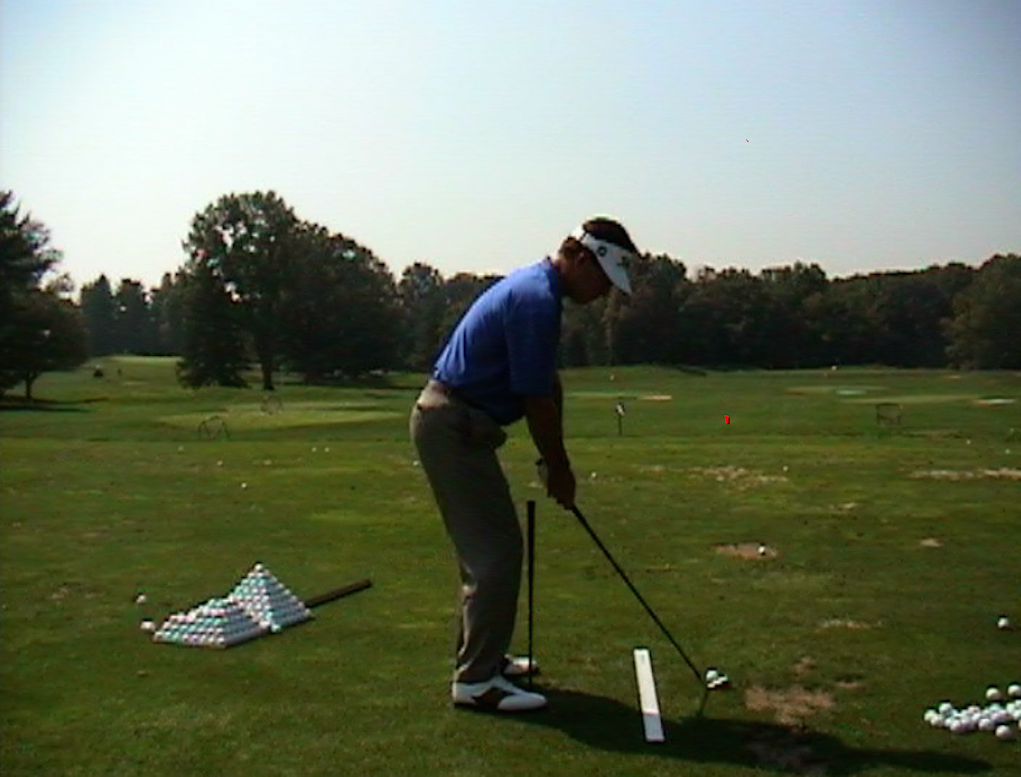
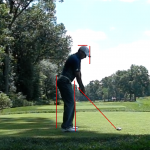
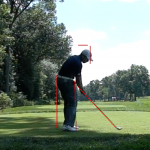
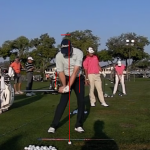
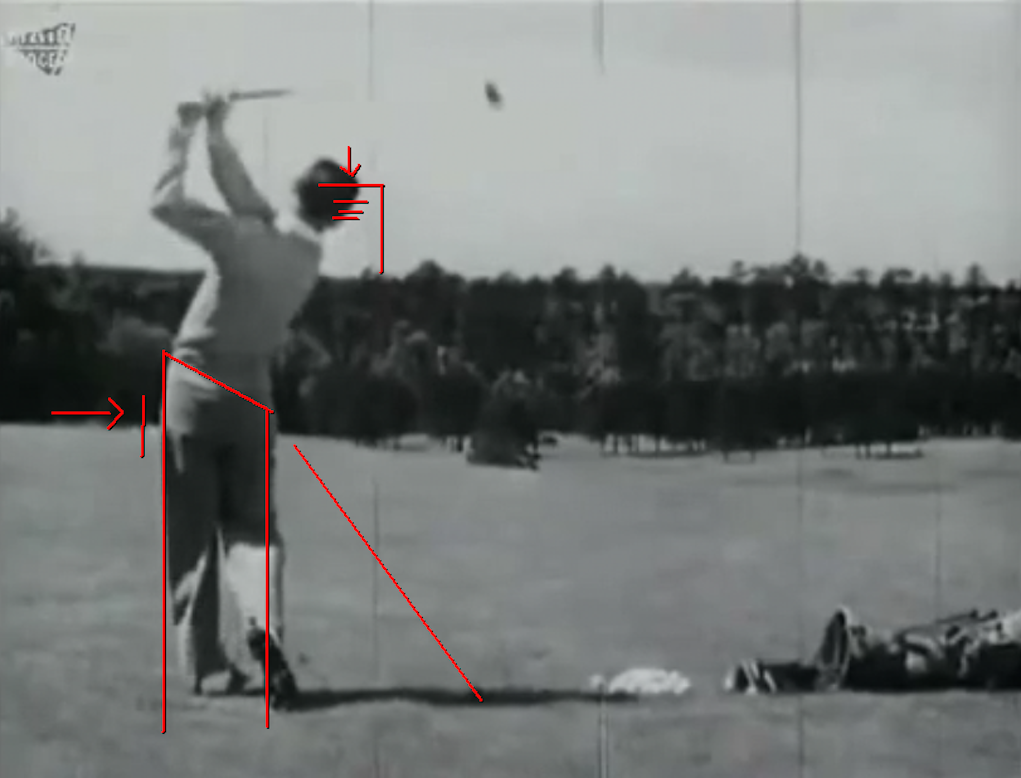

















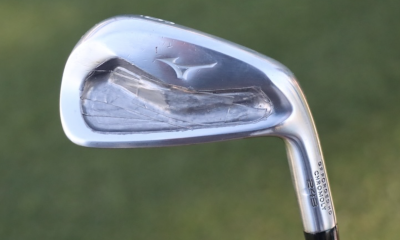

DeadFish
Aug 29, 2016 at 12:55 pm
The first step is wrong and totally bias. At what point is shifting weight from the balls of your feel to the heel of your feet more controlled and balanced than keeping your weight on the heels the entire time? That makes no sense what so ever.
How about not shifting weight at all from the balls of your feet to the heels. You shouldn’t be doing that at all. It should only be a lateral shift to the lead foot during the downswing. No other time should weight shift like that.
emerson boozer
Aug 25, 2016 at 1:57 am
hi, mostly agree with all of this but with martial arts training they would argue not the balls of your feet as the center but somewhere in between the balls and heel. makes sense, from there you are more stable and can move tension free.
DeadFish
Aug 29, 2016 at 12:39 pm
I agree. I never understand why they say the balls of your feet. Doing so requires a lot more balance and coordination, and you’re much more likely to sway forward and back trying to find that balance planted feel.
JP
Aug 23, 2016 at 8:46 pm
You think its complicated. It isn’t guys!!
Just look at Hogan, Nicklaus and Woods.
Lower their heads during the early part of the swing. Two do, one doesn’t!
Get into their right side but keep their weight from going to the outside of the right foot. All do!
Hogan gets “hip deep” in the backs wing, so deep in fact that he rotates his hips more than 45 degrees and so appears from front on, to be moving his right hip towards the target before his back swing is completed, when all that is really happening is his right hip is still rotating away from the target line.
The real clue though to what many of the best Pros are ACTUALLY doing to achieve balance, proper turn and powerful release can be found by discarding all this theoretical BS [ Sorry Wayne ] and use your own eyes to see what they do.
Both Hogan and Nicklaus set up with a slight “K”shape to their body at address with the straighter edge to the left side and concave side to the right side. During the first part of the backs wing this “K” shape is reversed, almost but not quite into a reverse tilt. If anything the left hip lowers and right hip rises. This allows the hips to rotate, right knee to remain bent and head to avoid rising up. It also keeps their sternum over the ball and maintains lateral spine angle to the ball.
All that they need to do from the end of the back swing into the finish, is to move back into their address “K” position. So what moves most? The LOWER BODY. What did Hogan emphasize about the downswing? MOVE THE LOWER BODY!!! He didn’t say Hips, he said LOWER BODY!!
So to describe what they do simply, their real movement is just a slight general body tilt to the right swinging the arms back, followed by a tilt back to the left and give the ball a wallop with the arms! All their other fine body motions are REACTIONS not ACTIONS.
If you try to build a swing by practicing a series of sequenced separate body part actions, you will never fulfill your potential! Muscle memory is a myth!
End of story!
Steve Wozeniak
Aug 23, 2016 at 5:29 pm
If you can’t explain it simply……..you don’t know it well enough……..
http://www.stevewozeniak.com
Jim
Aug 24, 2016 at 1:44 am
Lot easier to do in person! Video, kinesthetic aids and actually helping people see AND feel this by touching them. After I first broke my back (and things I hadn’t thought about in years just weren’t working like they used to) I was giving a lecture at a Teachers Conference on Sports Medicine – understanding golf Injuries, back problems and joint replacements. Bob Toski was on the card after me, and during lunch we were all out on the range demo-ing
new products & goofy teaching aids. Toski knew I was
working through recovering from 2 fx vertebrae & 3
herniated discs and watched me hit a few shots.
His diagnosis and HANDS ON tip to help was “Dammit Jimmie, you’re not turning your hip (enough) – I’m literally twice his weight and a foot taller – so this hyper, crazy little dude got behind me and grabbed a handful of my left hip
pocket. He said “Ok make a back swing” as I turned he pushed and turned my left hip in maybe another 10 or so degrees of rotation (I used to get it before the injury but couldn’t feel I wasn’t ‘there’ now)…. then he says “Ok, give a little push back and unwind”. I pushed off and as I got my tailbone (I’d write coccyx – but don’t want Smiz to get all fired up) back to where it started, he yanked that handful of hip pocket back, cranking my hips at least 45 open – maybe
twice what I was getting….
In doing so, he shredded my pants…A tear from the left side of the zipper almost down to my knee – leaving me ‘hanging out all over the place’ about 15 min before my presentation – I wore my rain pants from golf bag…
This crazy little man spun big ol’ me around – RESTORING a feeling (of a full unwinding I WAS capable of) I had lost after my injury – but most people have never felt to begin with…CREATING Centrifugal force by leading the unwinding with the left hip, so the left arm is ‘slung’ into and thru the downswing. Every very single student I’ve taught since that ONE day in 1996 that wasn’t doing right has gotten “The
TOSKI” from me on their first lesson. Right after we
analyze a few of their swings, show what they’re doing and then we start to implement changes….
I’m just careful to grab onto their belt and pants waisrband (yup, ladies too) so I don’t shred their clothes!
Most ‘slides’ stem from ‘throwing’ or ‘firing’ hips out from under the head – you wrote how the left side is unwinding ‘as hard as the right’ but this is predicated on the spine returning the tilt it had at address BACK to where it started, when just shoving hips usually more than doubles the tilt and leaves too much upper body too far back…
We’re explaining this differently, but honestly, I have found that more people have more problems leading with the right
side than the left….a weight shift from the right foot driving the entire body – just back off the right foot SO the left side can take over the ‘winch’ as sokn as the left foot feels the weight coming back – isn’t sliding….All these moves we’ve all described are subject to people doing them SOMEWHAT correctly – but too much OR too little of one or two of these “moves” will of course – screw it up, so, yes. It is hard to write about it in great detail to give the reader the best possible chance to execute it properly…
emerson boozer
Aug 25, 2016 at 1:54 am
if you’ve read this far, please tl:dr.
thanks
Dave
Aug 23, 2016 at 1:20 pm
Yup the smiz got it rjght.
Jack Gallagher
Aug 23, 2016 at 4:33 pm
I have to say I don’t agree. We all know in our hearts, as we yearn to lower our handicaps, that the tour pros are doing something that we’re not, and the conventional lessons from the local-course pro clearly don’t provide all the information about what the pros do differently. And so our handicaps tend to plateau, don’t they. How many times have you been instructed to keep your head perfectly still throughout the swing – don’t “dip”? Aren’t you the least bit curious why it is that most pros on the tour actually do “dip” on all of their shots through the bag? It’s not just Hogan. It’s Nelson (even more so than Hogan), Nicklaus, Miller, Watson, Trevino, Player, Els, Garcia, Faldo, Price, McIlroy, Westwood (who himself was seen on Golf Channel recommending keeping your head at the same level as address, but doesn’t swing that way), Woods. The list goes on.
Jim
Aug 23, 2016 at 6:14 pm
…I tell everyone “keep your head still is about the worst tip of all time”….rarely do we see it remain still and achieve a good backswing positions with our clients…I’ve cut hcps in half, gotten a bunch of students to 0-2, but, they’re the exception. Most are happy breaking 90. The serious ones, with some time to stay with lessons and actual practice – rather than playing twice without any range time other than ‘warm up balls – can break 80.
I don’t teach anyone the ‘same swing’… just the same principles. It’s about what they want to achieve. Win the club championship – or the 3rd flite, or just be pain free and hit a little better..
Jim
Aug 24, 2016 at 2:09 am
There’s a great old adage about a member coming into the pro and complaining his lessons weren’t working well enough. He said he wanted him to teach him to swing like Snead….The pro asked “can you bend over from your waist and touch your palms on the floor?” The member said “well, no”, then the pro asked “can you jump up on top of this desk from where you’re standing?” The guy says “of course not!”
So the pro says “Well then you can’t swing like Sam.”
Hogan had an unusual physique. All the “people” we want to ‘copy’ are special. They’re the top 1% of golfers. Even big guys – a bulky muscular Hal Sutton – a bulkier John Daly – or Ernie Els, just a flat out big guy all do stuff the majority of folks can’t (or shouldn’t even try) to do.
My ‘personal Swing Philosophy’ probably was the most significant project I wrote for my entire PGA GPTP program. It made me consolidate what was important. I closed with a Hogan reference “most golf professionals are lousy teachers. You can stand there and tell your dog to something – it doesn’t need to know why you want him to do it, but in order for students to truly improve they need to understand why you need them to do something (differently).
Jack Gallagher
Aug 25, 2016 at 1:55 pm
Yet Jim, and I mean this respectfully, Hogan said that he saw no reason why the average man in reasonably good physical condition couldn’t learn to swing the way experts like him swung it. I’m fairly certain that I read that in “Five Lessons.” He didn’t consider himself an exceptional athlete (though I think he was) – he claimed his brother Royal was a better athlete. Royal apparently was an excellent golfer as well, but was content as a successful amateur. [If there is any footage of Royal striking a golf ball, I’d love to see it.]
Mimicking a particular pro’s golf swing, admittedly, is not the same thing as swinging precisely the same way he swings.
However, without the video analysis provided by Wayne DeFrancesco, one really cannot fully appreciate the “how” of his method of a rotary swing. I agree with you wholeheartedly, Jim, about the difficulty of writing about technique as opposed to the hands-on approach on a lesson tee – actually showing a student what to try to accomplish (and I’m not a pro; I’m a student). I’ve had an in-person lesson from Wayne, and he pulled my left pocket around too (I’m referencing your Bob Toski story in a different thread, above).
In my opinion, the video analysis has two points of value. The first is that it shows some things that one can attempt to aspire to (your referenced rotary tail bone action in your Bob Toski story is right there on the film of Hogan). The second is that it dispels myths. Take the myth of “Hogan had a flat swing.” Well, not really. Wayne’s down-the-line view video shows him erect at address, but that doesn’t last long into the back swing, as his posture becomes a lot more “bent over” and his shoulders a lot steeper. Yes, his harms swing across his chest more than most, with his hands not going up and above/over his right shoulder. Yet, his shaft is perfectly on plane at let-arm-parallel-to-ground in the back swing; it is virtually if not entirely on plane at the top, and gets slightly laid off in transition (slightly flatter), but only for an instant. His shoulders, having steepened in the back-swing, remain just as steep if not steeper through the rotation of the down swing until after impact. The “effect” on the shaft just after the flattening phenomenon in transition is that it gets progressively steeper, such that at impact it has returned to the address plane. He slings the club aggressively leftward after impact, never attempting to swing the club-head “down the target line” at all (and for the initial few video frames, post-impact, the shaft is actually slightly under the address plane!), which is likely an effect caused in part by his hip rotation to the left (just like Bob Toski’s pulling on your hip pocket). It is also likely an effect in part resulting from the fact that his shoulders are still steep – through impact and after – and he has quite a bit of “side bend”; in fact he has more, way more, side bend than you might predict when seeing how erect he stood originally at address.
Without Wayne’s analysis of the footage (with a stationary camera in a down-the-line view) in slow motion, and with Wayne drawing lines on the screen on his website for proof, I wouldn’t have believed that Hogan did any of that which I just described. It is all a blur when viewed at full speed, given Hogan’s relatively quick 21/7 tempo (21 frames of video to the top of the back swing and 7 frames to impact). His swing at full speed does indeed to “appear to be flat” the first few times you see it on video – until you actually scrutinize it. But it’s not a “flat swing” at all. That’s a myth dispelled by Wayne’s analysis. It’s a swing in which the shaft spends a great deal of time precisely on plane. It’s a swing where his spine starts out fairly erect at address, but which changes early in the back swing to become perpendicular to the address plane and remains perpendicular to that address plane until well after the ball is away.
Is it difficult to get a student to attempt to make changes so as to do some of these things? I’m living proof that it is very difficult indeed. Some things you can look at over, and over, and still ask, how is he doing that? But there is value for a student like me watching the video and the lines being drawn, in that it shows me “that” Hogan is doing “X” and that I need to consider that I ought to try making changes via drills, etc. in order to approach doing “X” as well, which can be seen/audited with still-camera video of my own swing. When the video of my own swing shows that I’m still failing to do “X”, then a conversation can begin about the possible reasons, and drills can be recommended to attempt make changes. I’m not claiming this is a substitute for in-person lessons. Not at all.
But, respectfully, I’m getting more mileage in between in-person lessons by creating video of my own swing, auditing it against what I’m aspiring to, and then, post-new-drill practicing, going back and creating additional video and auditing once again. Video is also excellent (and seemingly a requirement for me) for filming drill sessions on the range, because it helps a lot to audit that footage as well, to see if I’m doing the dang drill correctly! It sucks to do a drill wrong after a lesson and then proceed to ingrain some new “wrong move” until my next lesson. The video stops that nonsense in its tracks.
Jim
Aug 25, 2016 at 10:52 pm
Mr. G – I wish I had a few more folks with your practice ethic & making sure “your practice has purpose” by double checking swings every so often in a single session. Every Instructor has watched ‘the wheels come off – after 3-6 really good swings! After the first one or two I don’t say anything, but after the 3rd I
might say “this time try and do that xyz thing a little better”. If that (always a SMALL suggestion) doesn”t revert it back to one of the better swings from just 2 minutes ago I’l say. “Ok..stop…come watch this, and tell me what YOU see”..
We’ll look at the different swings side by side – I use 3 High Speed HD cameras and a seperate 3D program with all the biometric measurements.
Visual learners do well with both seeing and ‘hands on’ manipulation while true kinesthetic learners want
the hands on much more than the video and will often say “I don’t want to see it” – even when I want to show them ‘how good’ those other swings were…
I teach a lot of foks with disabilities injuries and/or missing limbs. With my medical background and personal history of injuries / rehab & relearning to swing a couple of times I’ve always seek out every students strengths / weaknesses or vulnerable areas I need to protect. When starting a one armed player we’ll do backhand & forehand for several sessions & I’ll give them both clubs to borrow for a while til we establish which way they feel more comfortable….A few that stuck with golf ended up with mixed sets. Driver & distance clubs are almost always longer when hit backhand while the accuracy clubs 8? down tend to hit better forehanded…why bring that up? When swinging backhanded it’s more consistent for MORE people and produces more distance shifting off the back foot and unwinding from the front hip…
I’m saying in my 20th year of teaching professionally I’m pretty convinced by the variety of students I’ve had – from WWE/NHL/NFL/NBA, HS & College players to the profoundly disabled (and frankly some simply unathletic/uncoordinated folks) that it is easier & and just as powerful to unwind from the front and create centrifugal force than the right. No disrespect intended to anyone. Thanks for reading and I wish you continued success 🙂 if you’re ever near NYC – look me up if you can. My treat
Chuck Zellner
Aug 23, 2016 at 12:39 pm
I have had the pleasure of being a member of Wayne Defrancesco’s website for the last year. I have learned more about the golf swing in the last year from him than in my previous 20 years playing golf combined. Wayne is an excellent instructor and player. I would recommend any golfer to go to his website if they want to learn about the swing and improve. I’ve also taken in person lessons twice with Wayne. I’ve travelled to Florida and Maryland just to see him because he’s worth it. I highly recommend Wayne. He will help you without any quick fixes or gimmicks. He’s great.
Nathan
Aug 23, 2016 at 11:32 pm
How much did your average score drop in the last year while working with Wayne. From what to what?
Chuck Zellner
Aug 24, 2016 at 11:36 am
Hey Nathan, I went from like a struggling 10 to like an 8.5 now. I know that doesn’t sound like much but I truly feel that I’m on the verge of really knocking some shots off. I was as low as a 7 a couple months ago but as I continue to work on things, my handicap seems to go up and then go down past where it started. The reason I sent my initial post is because I believe Wayne has a lot of unique material you won’t see anywhere else. I just wanted to give him support because I think he could help a lot of folks. I think people try to oversimplify things in the golf swing. It’s very hard to make changes because the swing is very complicated.
Nathan
Aug 24, 2016 at 3:39 pm
While I don’t agree that the swing is very complicated. I do appreciate your response and am glad you’re knocking strokes off.
Chuck Zellner
Aug 24, 2016 at 4:07 pm
Thanks, man!
Sam
Aug 23, 2016 at 8:53 am
Now I know why most people dont improve in golf.
nathan
Aug 23, 2016 at 7:50 am
100% agree with Smiz on this one.
Not sure why golf is taught this way…baffles me.
Scott
Aug 23, 2016 at 9:20 am
I am glad that I was not the only one confused.
Scott
Aug 23, 2016 at 9:25 am
This article should come with a warning sign “This may be hazardous to your golf swing”. BTW, I know someone who has worked with Wayne. He can not get out of his own way. His pre-shot routine can be timed with a calendar. He has to review all of the positions in his head before he swings. The results are very mixed at best, and he has been doing this system for years.
Ooffa
Aug 22, 2016 at 9:52 pm
Had some good experiences with lessons? Don’t be so upset sitting at that hard 15 handicap.
tiger
Aug 23, 2016 at 6:25 am
Sorry but I’ve seen MSmizzle play and he is at a hard 21 not a 15….
mr b
Aug 22, 2016 at 3:51 pm
could use videos and drills to engrain 2-4. really been working on these to eliminate early extension but much easier said than done!
moco
Aug 22, 2016 at 9:23 am
Spot on, watch video of nick price in his prime, some of the best strikers float the right heel forward a bit.
Mark
Aug 21, 2016 at 5:03 pm
I’ll pass. I know a lot of people who have Hogan’s book and gave up trying to swing like him because they simply didn’t have Hogan’s ability.
T-Bone
Aug 21, 2016 at 4:34 pm
May I suggest that the lowering of the body’s Center of Mass, or “pivot compression” as you call it, is a natural reaction to the requirement for the CoM to be closer to the ball at impact, since the distance from the body’s CoM to the club-head’s CoM is reduced when the right arm is bent at impact from its extended position at address. The movement of the pelvis toward the golfer’s posterior, or “deepening as you call it, is also a natural reaction-a counter-balancing movement to maintain balance-the body’s CoM centered over the feet, heel-to-toe.
M oofa
Aug 20, 2016 at 3:07 pm
Cool article and such a simple swing drill
With the shaft. Thanks!!
ooffa
Aug 20, 2016 at 1:59 pm
Enough already with this Hogan guy already. Is this the same Hogan that took down Gawker? He looks much slimmer in black and white.